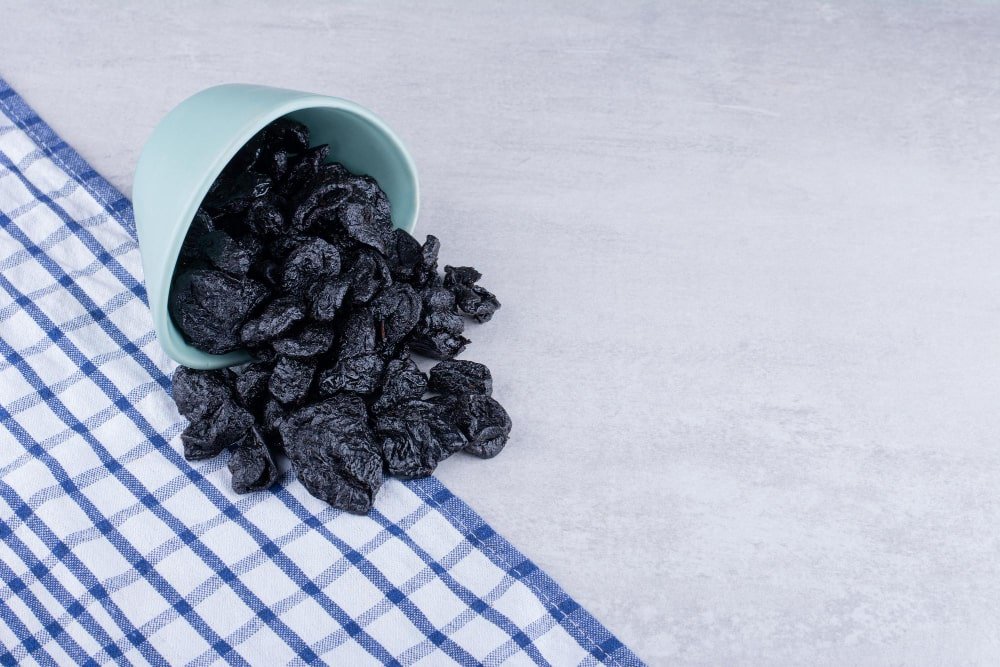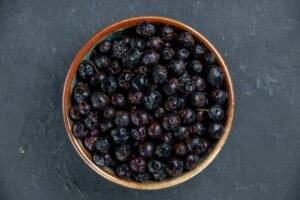Small, sweet, and packed with healthy nutrients, currants seem like a great treat for parrots. But while they may be able to satisfy your parrot’s sweet tooth, they’re not the ideal treat.
Currants are a type of dried fruit made from a specific variety of seedless grapes. They are nutritionally rich and offer incredible health benefits. But being a dried version of grapes, it would also mean that they retain a lot of the natural sugars found in the original fruit, perhaps even more. So, can parrots eat currants?
Parrots can eat currants but in very small quantities. Although currants are healthy, they are not an ideal treat for parrots due to their high sugar content. Consuming too many of them can potentially lead to stomach upset for parrots among other issues.
Quick Navigation
Are Currants Safe For Parrots?
While currants are not toxic to parrots, eating too many can have negative effects on their health. Currants are mostly sugar which can irritate a parrot’s stomach.
Also, over time, regular consumption of currants in large quantities can contribute to unhealthy weight gain in parrots. So while currants are safe for parrots to eat for the most part, you shouldn’t include them in a parrot’s regular diet.
Nutrition In Currants For Parrots
Currants are packed with nutrients. Since they are made by sun-drying grapes, they concentrate all of that nutrition in a much smaller size. Not only that, the transformation process of sun-drying grapes to currants actually adds to their nutritional value. Here are some of the essential nutrients currants provide:
Boosts immunity
Black currants are naturally high in antioxidants and anthocyanins helping the body fight viruses and infections. They can strengthen your bird’s immunity and help them ward off diseases.
Quick Energy
One of the upsides of being sweet is that currants can give a quick energy boost to your parrot. The fructose present in currants is easily digestible and can be converted into energy to give instant energy to birds.
Nutrient Dense
Like raisins, currants are also made from grapes and similarly have a range of vitamins and minerals:
- Anthocyanins
- Polyphenolic substances
- Antioxidants
- Vitamin C

Potential Risks Of Feeding Too Many Currants To Parrots
Currants are technically safe for parrots to eat and many of them love it. After all, it is a sugary fruit. But those sugars are not so much of a treat for a parrot’s delicate digestive system. Here are some of the potential problems a parrot may run into if it eats too many currants:
Increased Sugar Levels
Currants can provide a source of quick energy to parrots due to the fructose present in them. But having too many of them can actually do more bad than good. Currants contain around 67g of sugar (per 100 grams) which can lead to elevated sugar levels in parrots.
Obesity
Since currants are so calorically dense, they are not exactly a food you should have in a parrot’s healthy diet of veggies and fruits. Currants can make them satiated quicker and make their metabolic processes slower when consumed excessively. As a result, it may lead to weight gain and other health issues in parrots.
Choking Hazard
When it comes to feeding small parrots, it’s important to be cautious about the size and texture of the treats you offer them. Currants, being small and somewhat sticky, can pose a potential choking hazard. The small size of currants means that they may be difficult for some parrots to swallow properly. If a currant gets stuck in their crop, it could cause it to choke.
How To Feed Currants To Parrots?
It is generally not recommended to offer currants as an independent snack to your parrots. Currants on their own contain more than 283 calories (per 100 grams) which means they are extremely filling. Additionally, they are particularly easy for small parrots to eat. Dried fruits that have a sticky texture can possibly become a choking hazard by creating problems in swallowing them.
I usually soak the currants in warm water before offering them to my parrots. This helps to soften the fruit which makes them less of a choking hazard.
Plus, it also lets some of the nutrients to be absorbed in the water. This can help parrots to take in the nutritional benefits of this fruit without you worrying about the calories.
If you want to give them to your parrots as a separate treat, it is best to cut them into small pieces. This can help prevent excessive calorie intake and ensure that your parrot enjoys the treat without overindulging.

How Many Currants Can Parrots Eat?
Currants should not make a big part of your parrot’s diet. In fact, it should only be offered occasionally, not more than once a week. This is because of their sweet taste and high calories.
The larger parrots can be fed 1-2 currants while anything over 1 currant can be too much for smaller parrots. While it is okay to give them sweet foods, you need to be careful since they can start to become picky and avoid some of the healthier food on their plate.
Conclusion
While currants are not harmful to parrots right out of the box, you should keep their consumption in check. At one time, you should only give 1 or half a currant to them.
You cannot really let your parrots have it on them because they can really go crazy with it. I see a lot of people adding it into their parrot’s seed mixtures which can be a mistake.
One of my friends, let his Indian Ringed Neck indulge in currants a little too much and it got hooked on these sugar balls so bad that it would refuse to eat other foods that it previously had no problem eating. Parrots can be easily spoilt by such treats considering they are very much like kids. So, If you want to try giving your parrot a treat like currants, then it is probably better to give it to them with a watchful eye.







